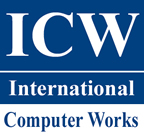 "It all begins with the Map!"
"It all begins with the Map!"
Integrated Mapping
Providing the tools to manage the map that works with your applications.
GeoAuthor® - GT and GeoPoints
From International Computer Works, Inc. users can choose the editing tools that best match their organization's needs. ICW delivers the correct measure of ease-of-use and sophistication to leverage investments made in existing GIS data while providing the user with the tools to enhance TIGER/Line® Shape Files maintaining TIGER topology. Optionally, build your own base map using the GeoSpatial Technology (GT) in GeoAuthorGT™. Both alternatives integrate with GeoPoints collectively providing dynamic means for constructing and maintaining GIS databases with features used to leverage staff resources and ensure the integrity of data used in other applications.
GeoAuthor® is designed to provide the user with an easy-to-use set of tools with which to create a project for a county or county equivalent using TIGER/Line Shapefiles provided by the US Bureau of the Census. Once the project is created, GeoAuthor® permits the user to make edits to the geometry and tabular attributes of the map data. This includes aligning TIGER to local geometry (i.e. parcel maps, aerial photos, etc.), add missing features (i.e. streets, water, landmarks, etc.), modifying tabular attributes (i.e. names, address ranges, ZIP Codes, etc.) and use the diagnostic routines in GeoAuthor® or in non-TIGER databases, GeoAuthorGT™ to confirm the integrity of the data. GeoAuthor® and GeoAuthorGT™ also include GeoPoints© which is designed to create and maintain geographic databases of points and tabular attributes.
Intuitive menu driven with context sensitive Help system along with context sensitive Computer Based Training videos narrated including closed caption text and comprehensive User's Guides for GeoAuthor®, GeoAuthorGT™ and GeoPoints.
Symbology for objects in linear networks and point data are user defined based upon classification codes and edit status. Tabular attributes and unit length distribution of addresses can be user defined.
Both the linear network and point data can be easily updated and expanded using GIS data created by external agencies. Conflation tools are the silver tuner for making updates and additions easily and accurately.
There are two ways to store data in a GIS system, topologically or as objects. Edit an object database and immediately perform analysis. Edit a topologically stored database and you likely have to run a process against the database before you can perform spatial analysis. Topologically stored data has several benefits. GeoAuthor® uses both topology and objects.